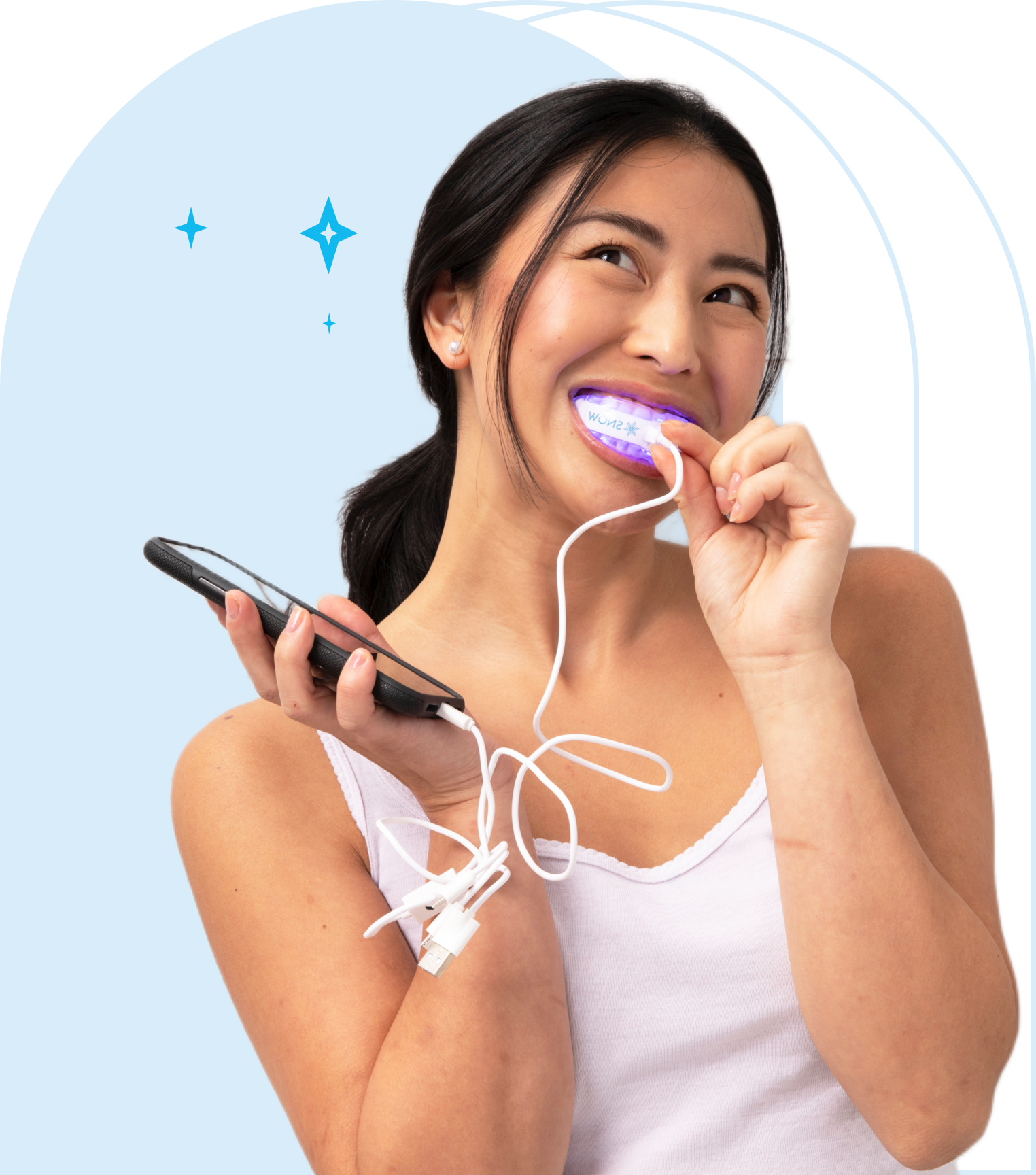After finishing a teeth whitening treatment, most people immediately start thinking about what they can eat—and when. If you're asking, "How long after teeth whitening can I eat normally?". The answer depends on your enamel's condition, the type of whitening procedure used, and how you care for your teeth in the first 48–72 hours.
Why does this matter so much? The whitening process temporarily weakens tooth enamel, leaving your newly whitened teeth more porous and sensitive to temperature, acids, and pigments found in everyday foods and drinks.
To help you navigate this short but critical recovery window, this complete guide breaks down what to avoid, what to eat, and how to protect your whitening results.
Key Takeaways
-
Your enamel is more absorbent after a whitening treatment
-
Staining foods and acidic drinks can reverse your results
-
A “white diet” supports recovery and protects your enamel
-
Smart oral hygiene prolongs your whitening results
Why Diet Matters After Teeth Whitening
Right after a whitening session, your teeth are highly vulnerable. Here’s why what you eat matters during this short period.
During a whitening procedure, bleaching agents open the pores of your enamel to remove deep surface stains. That’s what gives you a brighter smile, but it also temporarily weakens the enamel and increases its absorption of pigments from foods and beverages.
This is why dentists stress avoiding certain foods right after whitening. Even one mistake can quickly stain your newly whitened teeth. Acidic foods can also erode enamel further, causing sensitivity and reducing the longevity of your results.
Saliva plays a natural protective role during this stage. It begins the process of remineralizing your enamel. Staying hydrated and giving your enamel time to close its pores is essential for both comfort and effectiveness.
What’s happening to your teeth post-whitening:
-
Tooth enamel is porous and highly absorbent
-
Sensitivity to hot and cold foods is more common
-
Acidic foods and dark sauces can weaken enamel or stain
-
Saliva helps restore strength, but that takes 24–72 hours
How Long After Teeth Whitening Can I Eat Normally?
This is the most common question patients ask after finishing a whitening session—and for good reason. The foods and drinks you consume during the first few days after a teeth whitening treatment directly affect the success and longevity of your results.
In most cases, you can return to eating normally 48 to 72 hours after your whitening procedure. This timeframe allows your enamel to stabilize, reduce sensitivity, and begin closing the microscopic pores that were temporarily opened by the whitening agents.
Why This Window Matters
Immediately after a whitening procedure, the outer layer of your teeth becomes more porous. These open pores make your teeth more vulnerable to discoloration, especially from pigmented or acidic foods and drinks. Even a small amount of red wine, soy sauce, or tea can easily stain freshly whitened teeth during this period. This also includes certain fruits, dark sauces, and beverages like dark sodas and citrus-based juices.
Your enamel also needs time to recover from the temporary dehydration and surface disruption caused by bleaching agents like hydrogen peroxide or carbamide peroxide. As your enamel rehydrates and remineralizes, the risk of staining decreases, and your results begin to set.
The 3-Day Post-Whitening Timeline
Once you understand the importance of the first 72 hours, it becomes easier to follow a phased eating plan that supports enamel recovery and protects your newly whitened teeth. This timeline outlines exactly what to eat, what to avoid after teeth whitening, and how to care for your smile across the critical first three days.
0–24 Hours: Maximum Caution
During the first 24 hours, your enamel is at its most porous, which means it can absorb stain-causing substances more easily. Any dark, acidic, hot, or cold items can trigger tooth sensitivity or discoloration.
Recommended foods include:
-
White fish (such as cod, tilapia, halibut)
-
Skinless chicken or turkey (avoid sauces or seasoning)
-
Egg whites (boiled or scrambled without butter)
-
Plain white rice or mashed potatoes (no gravy)
-
Plain yogurt, cottage cheese, or skim milk
-
Clear liquids like coconut water or tonic water
-
Drinking water throughout the day to rinse away food particles and hydrate the enamel
Avoid foods and beverages that:
-
Contain strong pigments like coffee, tea, red or white wine, dark sodas
-
Are acidic, such as citrus fruits and vinegar-based dressings
-
Are too hot or cold, as this can increase tooth sensitivity
-
Are high in processed sugars or artificial colorants
Avoid tobacco products, smoking, vaping, and colored mouthwash entirely, as they can directly stain teeth and slow enamel recovery. These are especially important to avoid immediately after your whitening treatment.
24–48 Hours: Controlled Expansion
At this stage, your enamel begins to remineralize. While teeth may be less sensitive, they are still not fully recovered from the whitening treatment, so it’s important to remain cautious with your food choices.
You can safely add:
-
Plain white pasta or boiled potatoes
-
White bread and plain bagels (without toppings or seeds)
-
Boiled or steamed cauliflower
-
Peeled apples and bananas
-
Low fat dairy options like mozzarella and unsweetened plain yogurt
Continue to avoid:
-
Coffee, tea, red and white wine
-
Dark sauces including soy sauce, balsamic vinegar, and tomato-based condiments
-
Chocolate, berries, and any fruit juices
-
Highly colorful or spicy dishes like curry or foods with turmeric and paprika
Best practices:
-
Drink only through a straw when not drinking water
-
Rinse with drinking water after every meal
-
Brush your teeth using gentle circular motions with a soft-bristled toothbrush
-
Use fluoride toothpaste, but skip any whitening formulas during this period
48–72 Hours: Gradual Return to Normal
After two days, most people can begin to eat normally. At this point, the pores in the enamel are largely closed, and your teeth are adjusting to the whitening treatment. However, it’s still wise to limit stain-prone foods for the best long-term results.
What you can do now:
-
Resume a balanced diet and slowly reintroduce darker foods one at a time
-
Continue using a straw for drinks like tea, soda, or coffee
-
Brush after meals using non-abrasive toothpaste
-
Time meals around your oral care routine to keep teeth clean and stain-free
Even after 72 hours, reducing your intake of staining foods like balsamic vinegar, red wine, and dark sauces will help preserve your results. Consistently practicing good oral hygiene and staying hydrated with drinking water also contributes to a longer-lasting white smile.
What Is the White Diet?
The white diet is the foundation of post-whitening recovery. It’s a short-term eating plan designed to protect your enamel while preventing new stains on your newly whitened smile. The goal is simple: eat only foods and drinks that would not stain a white shirt.
Safe Foods to Eat After Whitening
Following this plan for the first 48–72 hours after your whitening session helps ensure the whitening process is successful and long-lasting.
Proteins (low pigment, gentle on enamel):
-
Skinless chicken or turkey breast
-
White fish (e.g., cod, haddock, tilapia)
-
Egg whites (no yolks)
Carbohydrates (non-acidic, no added colors):
-
Plain white rice
-
Pasta (no sauce)
-
White bread, tortillas, or plain bagels
Fruits and Vegetables (low color, soft texture):
-
Bananas
-
Peeled apples or pears
-
Cauliflower (boiled or steamed)
-
Boiled or mashed potatoes
-
White onions (cooked)
Dairy (neutral pH, supports enamel remineralization):
-
Skim milk or low-fat milk
-
Cottage cheese
-
Plain yogurt
-
Mozzarella or white cheese
Drinks (non-acidic and color-free):
-
Water
-
Coconut water
-
Tonic water
-
Clear broth (chicken or vegetable)
Foods and Drinks to Avoid After Teeth Whitening
Even in small amounts, the following items can quickly reverse your results by staining or eroding your enamel.
Dark beverages:
-
Coffee
-
Tea
-
Red wine
-
Cola and dark sodas
-
Grape, cranberry, and orange juice
Staining foods:
-
Tomato sauce
-
Soy sauce
-
Chocolate
-
Dark berries (blueberries, raspberries, blackberries)
-
Curry, turmeric, or chili-based dishes
-
Balsamic vinegar and vinaigrettes
Harmful habits to avoid:
-
Smoking or chewing tobacco
-
Vaping
-
Colored or alcohol-based mouthwash
-
Alcohol (especially beer, wine, and cocktails with juice)
Tip: If it would stain a white T-shirt, it should be avoided during your recovery.
Oral Hygiene Tips for Post-Whitening Recovery
Oral hygiene maintenance is just as important as diet when it comes to preserving your whitening results.
Here’s how to protect your enamel without causing irritation:
-
Brush with a soft bristled toothbrush twice a day
-
Use fluoride toothpaste with no abrasives or whitening ingredients
-
Avoid alcohol-based mouthwash—choose neutral or gentle formulations
-
Rinse with water after meals to reduce stain buildup
-
Drink water consistently to support saliva production
Saliva helps neutralize acidity and aids in remineralization. Stay hydrated and avoid dry mouth triggers like alcohol and smoking.
If you feel any lingering sensitivity, consider using a toothpaste formulated for sensitive teeth for a few days.
How Different Whitening Methods Affect Eating Timelines
Not all teeth whitening treatments affect your teeth in the same way. Some methods use stronger formulas that require a longer recovery period, while others are designed to be gentler on tooth enamel and allow you to eat normally sooner.
Understanding the difference between whitening methods helps you time your meals more effectively and protect your whitening results through proper care and smart dietary choices.
In-Office Whitening Treatments
In-office whitening is a powerful option for tackling surface stains and deeper discoloration, but it comes with a longer adjustment window.
These procedures:
-
Use high-concentration bleaching agents
-
Deliver faster visible results but often cause more sensitivity
-
Leave enamel more porous for up to 72 hours
-
Require strict adherence to the white diet
-
Demand you steer clear of dark colored fruits, coffee, red wine, and acidic foods
-
Increase the risk of sensitivity when exposed to hot or cold meals
You must steer clear of staining foods and beverages for a full 72 hours to avoid compromising the brightness achieved. Even one misstep—like eating dark colored fruits or drinking fruit juice—can stain the enamel and reduce the effectiveness of the treatment.
Smoking or chewing tobacco during this time can further erode enamel and lead to uneven coloring.
At-Home Whitening Systems (Like Snow)
At-home systems like Snow offer an effective, flexible alternative that fits into your routine. These treatments are ideal for people who want to brighten their teeth over time without harsh ingredients or extended downtime.
Snow’s system:
-
Is designed for regular, safe use
-
Is gentler on enamel, making sensitivity less likely
-
Often allows users to eat normally after just 48 hours
-
Works best when paired with the white diet, regular brushing, and healthy oral care habits
Although Snow is formulated to minimize irritation, it’s still important to avoid habits that can quickly erode enamel, such as consuming acidic foods, using harsh oral products, using teeth whitening gel improperly, or chewing tobacco.
You should continue to steer clear of staining foods and drinks for at least two days, even with a gentle formula. Pair your routine with regular brushing and proper care to extend your whitening results.
Bottom line: No matter how gentle the product is, post-whitening care should be consistent. Avoid foods and drinks that stain, support enamel health, and practice excellent oral hygiene.
Final Thoughts
Eating the right foods after a teeth whitening procedure isn’t just about comfort—it’s about having a proper care for your investment. By following the white diet for the first 48 to 72 hours and avoiding staining or acidic foods, you’ll keep your newly whitened teeth looking bright for much longer.
If you want a whitening system that’s gentle on enamel and easy to maintain, Snow’s at-home whitening products are designed to deliver professional-level results with minimal sensitivity. Pair your whitening treatment with smart aftercare, and your brighter smile will go the distance.
Shop Snow today and start protecting your results from day one.
FAQs
What happens if I eat staining foods too soon after teeth whitening?
If you eat staining foods too soon after teeth whitening, your newly whitened teeth may absorb pigments and become discolored. The tooth enamel is still porous for up to 72 hours after the whitening procedure, making it more likely to stain from foods like soy sauce, red wine, tomato sauce, and coffee. This can reduce the effectiveness and longevity of your whitening results.
Does the type of food I eat affect how long whitening lasts?
Yes, the type of food you eat after teeth whitening directly affects how long your whitening results last. Regularly consuming staining foods like dark sauces, citrus fruits, chocolate, and dark-colored drinks can quickly reverse your results. Sticking to low-pigment, non-acidic foods and practicing good oral hygiene maintenance helps keep your brighter smile longer.
Can eating acidic foods after whitening damage my enamel?
Yes, eating acidic foods after whitening can weaken tooth enamel. Acids in citrus fruits, vinegar, and fruit juices can erode the enamel when it’s already vulnerable from the whitening treatment, increasing the risk of sensitivity and staining. Avoid acidic foods for at least 48 to 72 hours after the whitening session to protect your teeth.















































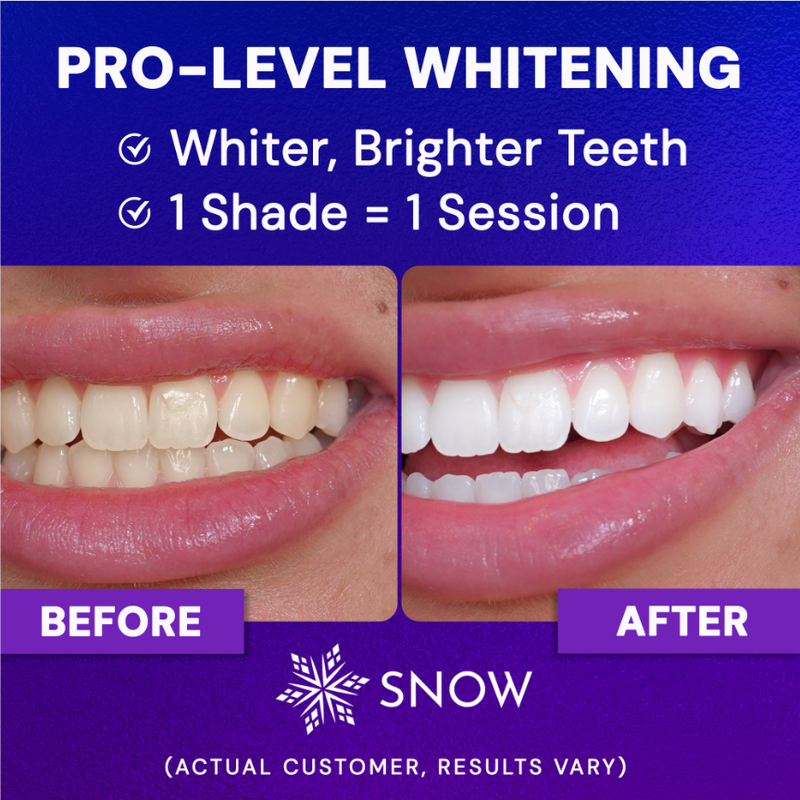
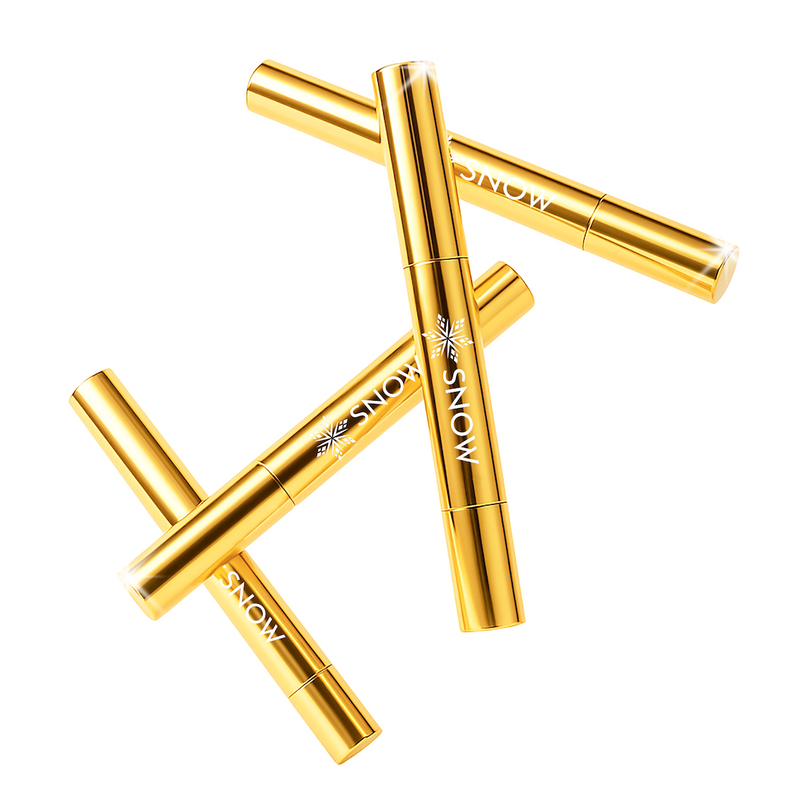
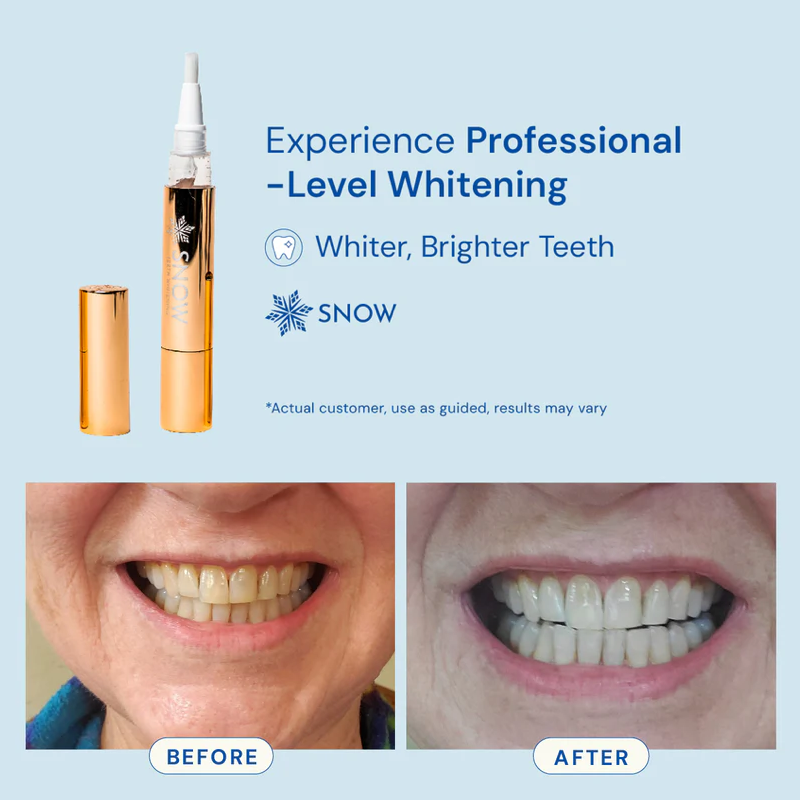
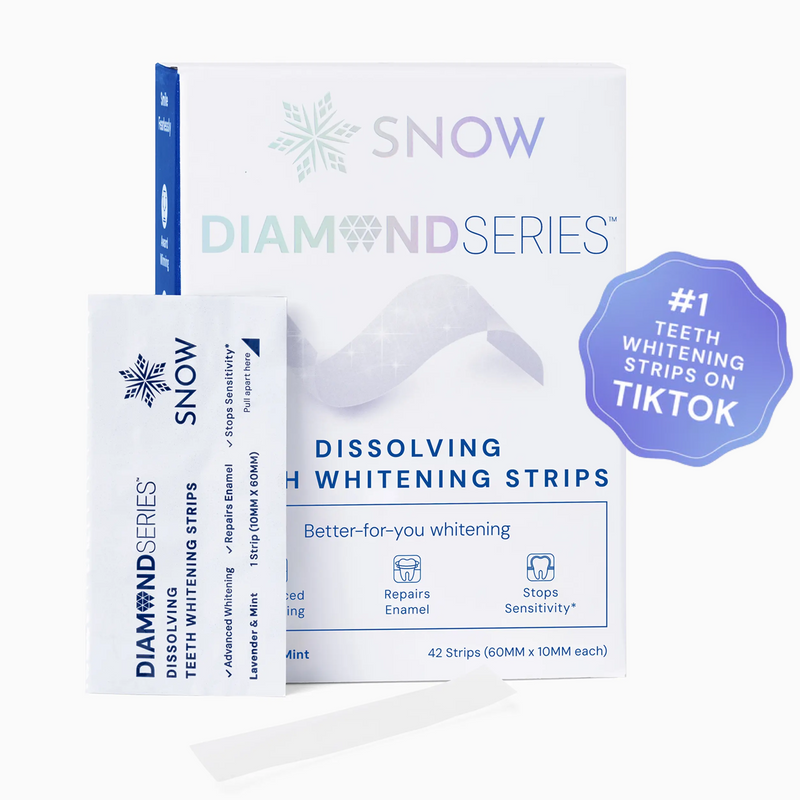

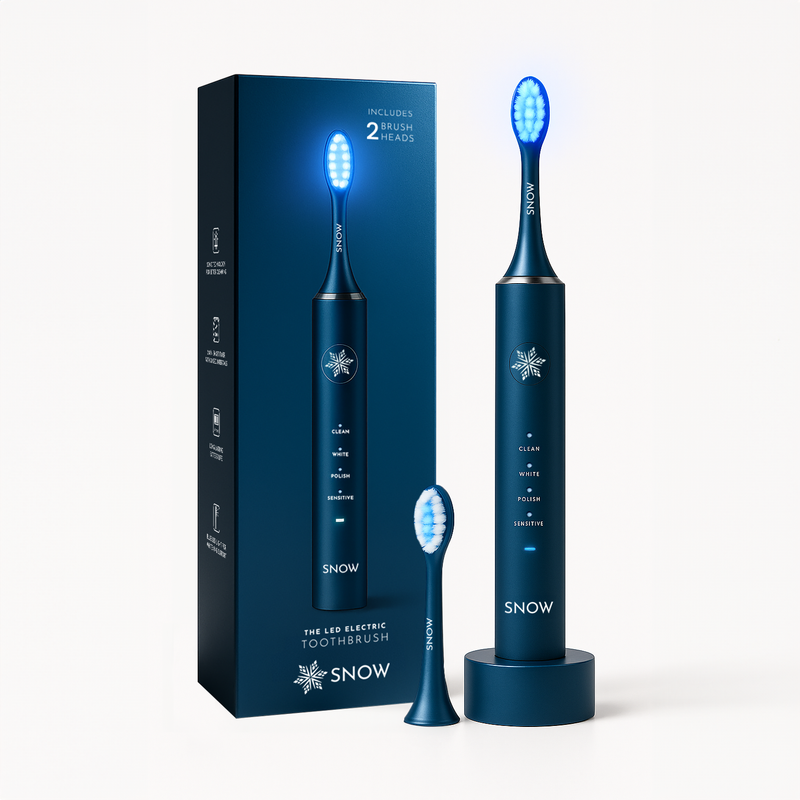


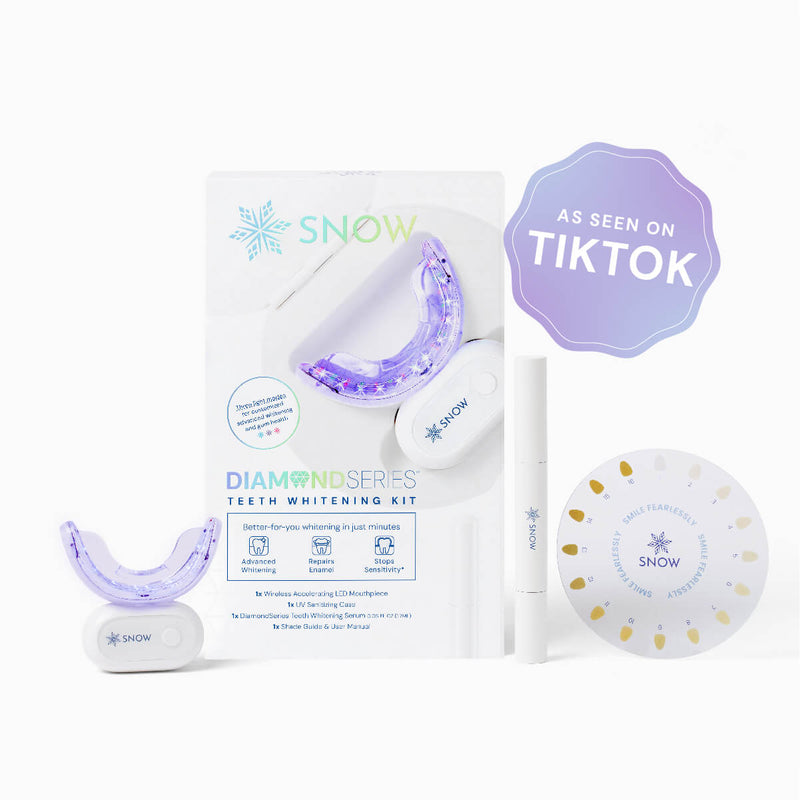
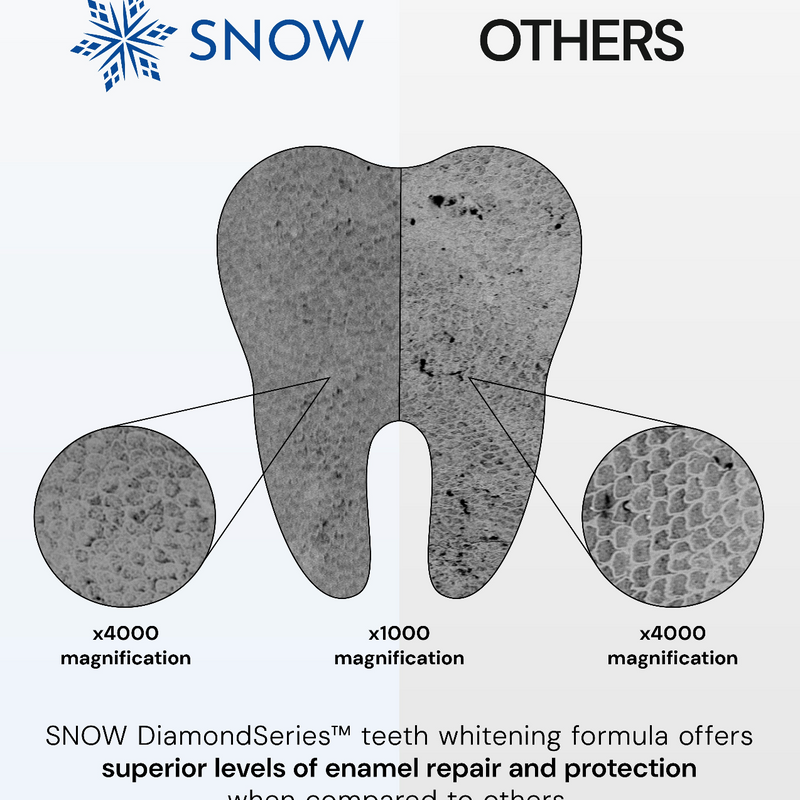


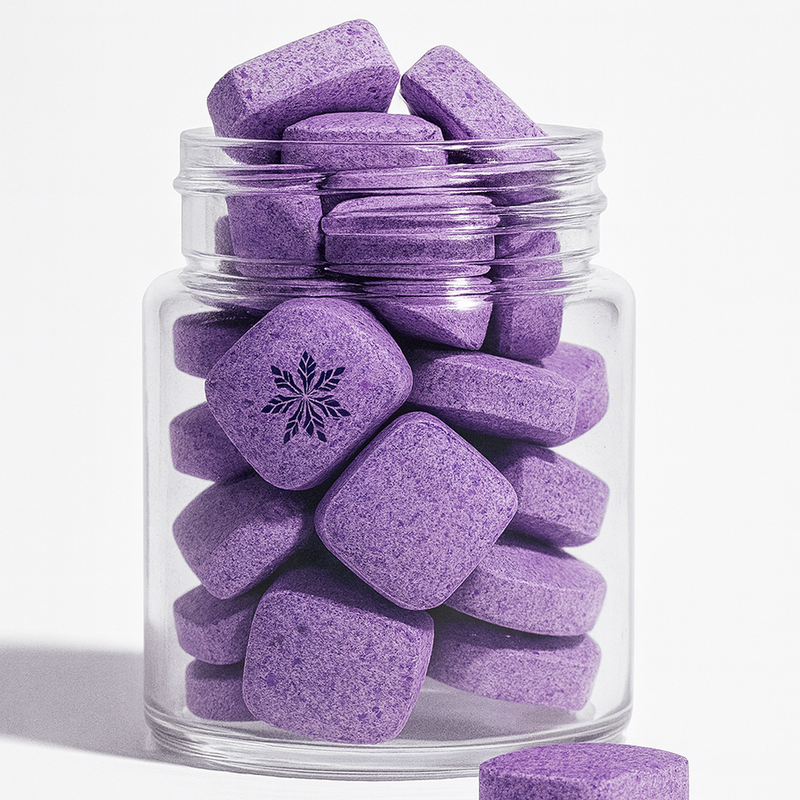
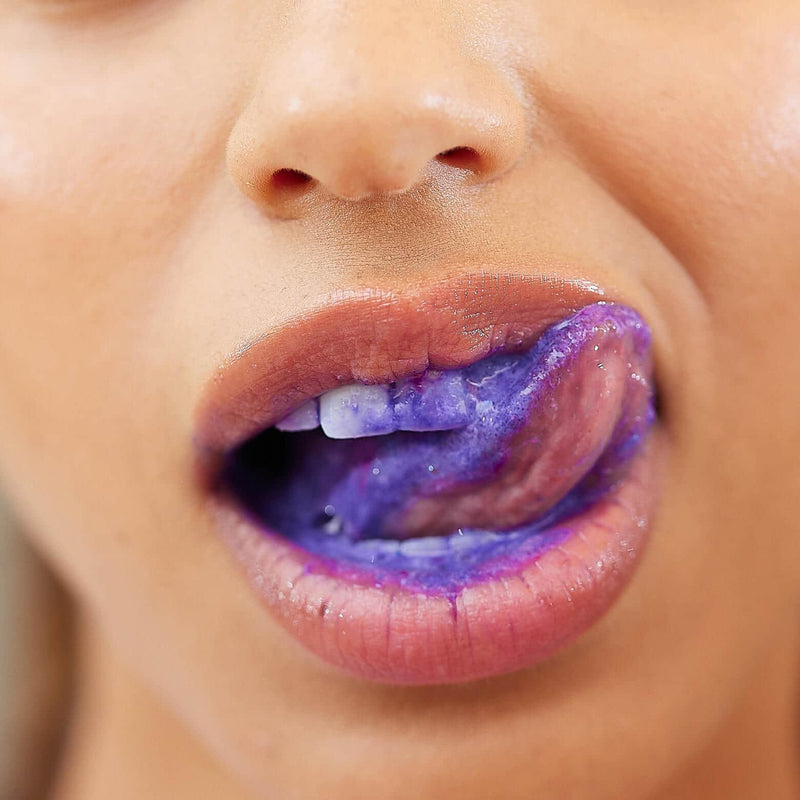
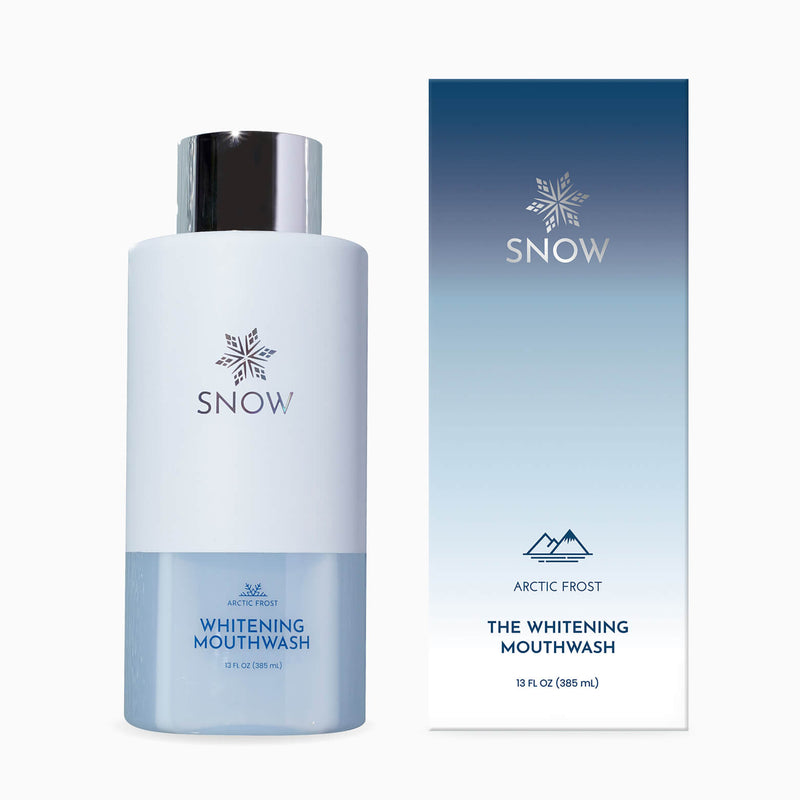




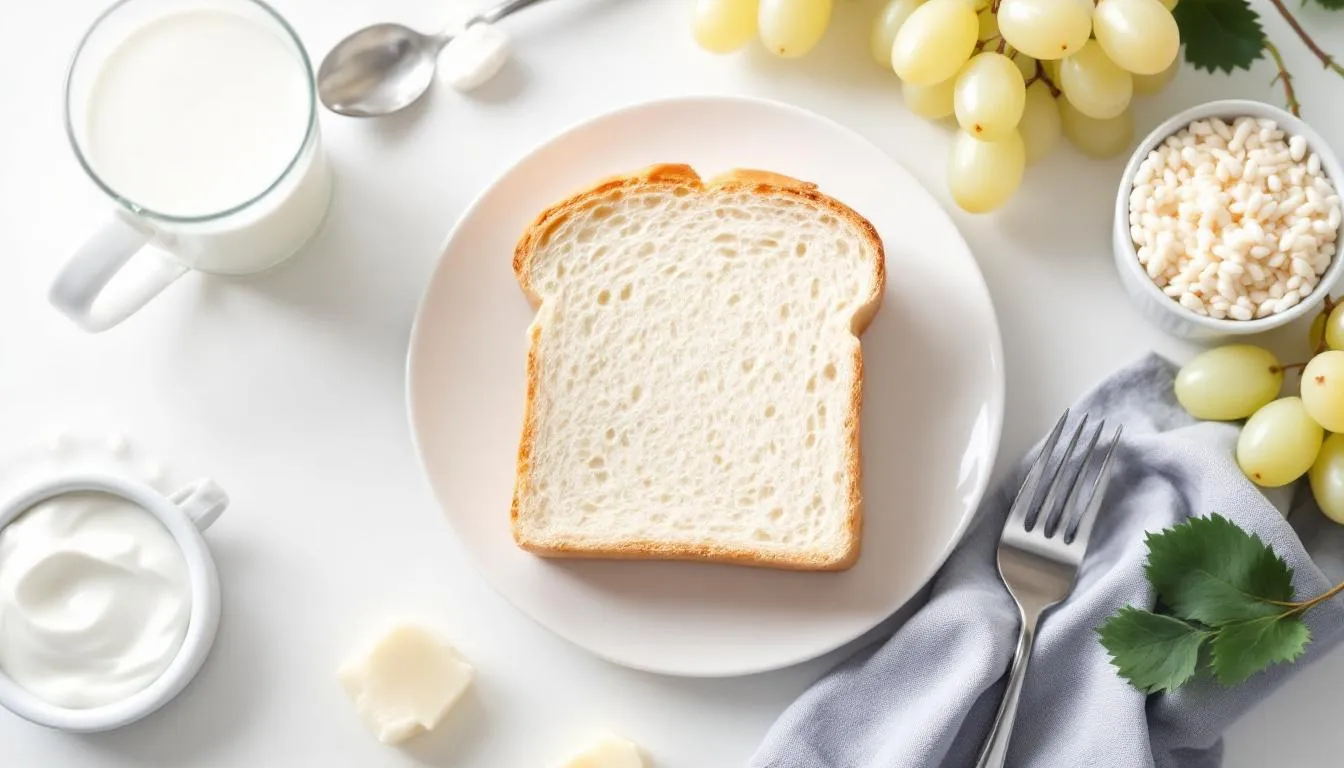
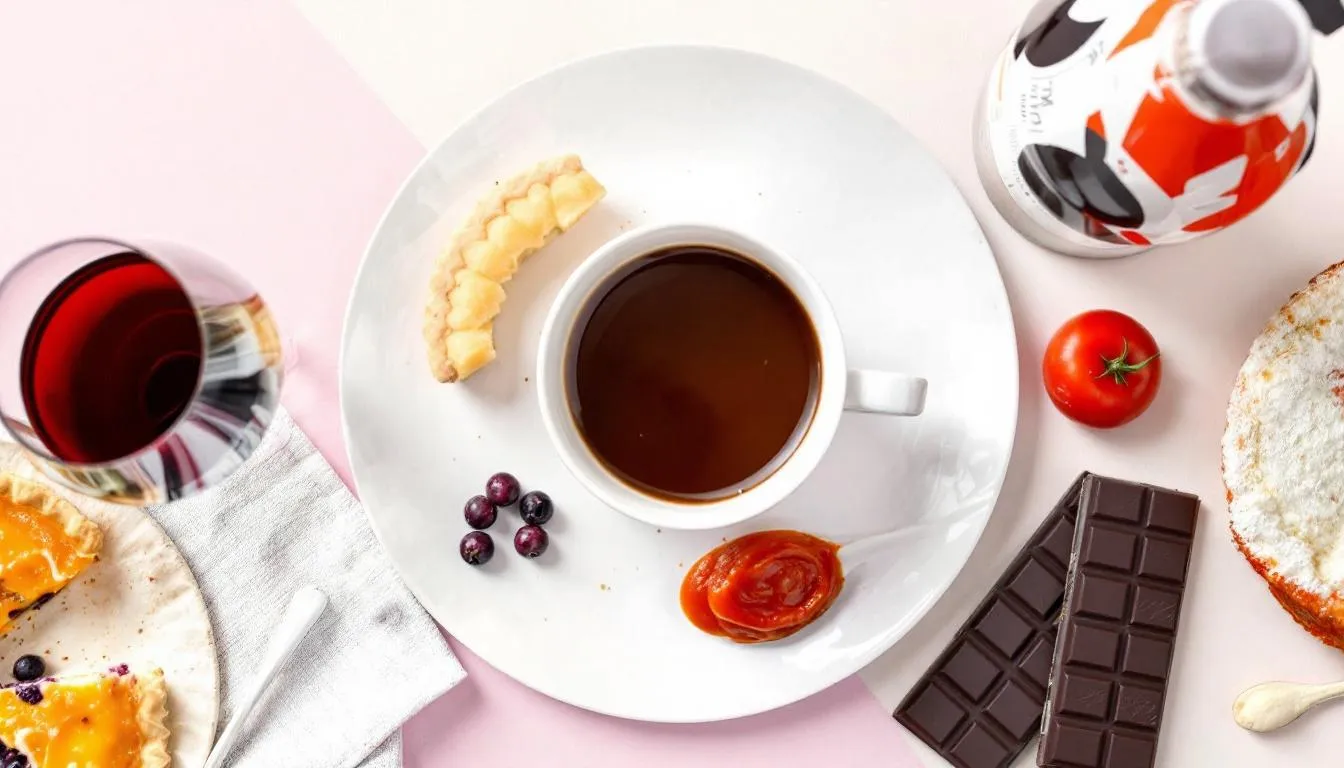




![Clove Oil for Toothache Relief [Does it Really Work]](http://www.trysnow.com/cdn/shop/articles/clove_oil_for_toothache_does_it_really_work.png?v=1755777694)
